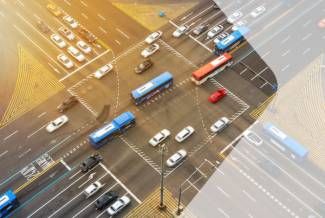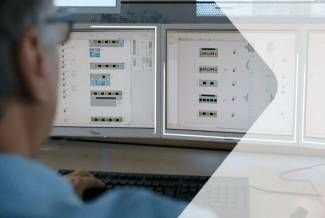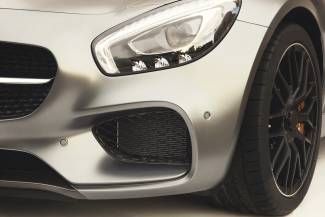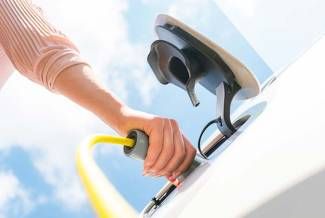Weigh-in-motion systems as an important part of intelligent transportation systems
Weigh-in-motion (WiM) systems are able to measure the weight of vehicles in real time and thus contribute to improving road safety and road congestion. Alongside intelligent intersections, LiDAR systems and green waves, WIM is part of the network of intelligent traffic systems designed to improve road safety.
On this page you can find out all about the importance of Weigh-in-Motion systems in traffic and the benefits that WiM offers for road safety and the road network.
What are Weigh-in-Motion (WiM) systems?
Weigh-in-Motion (WiM) systems are technologies that are used in intelligent road traffic to record the weight of vehicles without them having to stop. Translated, Weigh-in-Motion means: weighing in motion. Thanks to their simple principle, the systems play a crucial role in the monitoring and smooth management of traffic flows.
WiM systems can also help to minimize the risk of structural overloading bridges and roads, thereby increasing safety for all road users. By continuously monitoring the weight, it is also possible to reduce wear and tear on the road infrastructure.
How does a Weigh-in-Motion system work?
Thanks to their non-invasive principle, WiM systems simplify the measurement of the weight of vehicles on highways, toll booths, rails or other traffic areas. The most important components with which a WiM system works are sensors, processing units and communication systems.
Sensors
WiM systems use different types of sensors to collect the required information. The most common sensor types are
Piezoelectric sensors:
These sensors are installed in the road surface and react to the pressure caused by vehicles driving over them. The weight of the vehicle can be calculated based on the change in pressure.
Strain sensors:
Like piezoelectric sensors, these are embedded in the road surface and measure the deformation of the road when a vehicle drives over it. The deformation is proportional to the weight of the vehicle.
Optical sensors:
These can be mounted above the road and use cameras to record the vehicle profile. This data is used to estimate the weight.
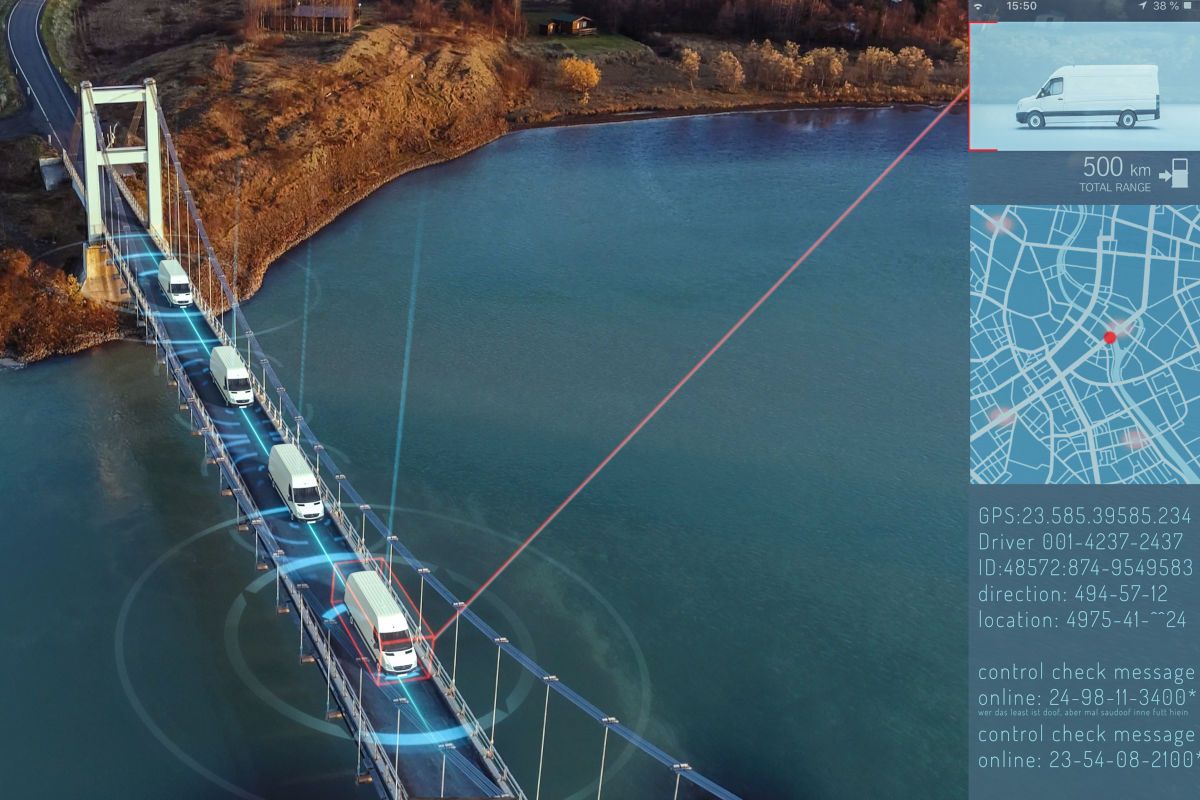
Good to know: Additional sensors can be installed at an angle at the end of the sensor field. These make it possible to detect the position of the vehicle in the lane and to differentiate between single and dual tires. This helps to preserve evidence and record data for processing units.
Data collection and processing units
The collected data is evaluated and transmitted to processing units. These calculate the vehicle weight based on the specific sensor information. Modern WiM systems often use artificial intelligence and algorithms to improve the accuracy of weight calculations.
Data communication
The calculated weight data and other relevant information are transmitted to a central system or database via a communication interface. This can be done locally for monitoring a specific road section or as part of a larger traffic management system in real time.
How WiM systems support traffic management
Weigh-in-motion (WIM) systems are an important component of intelligent traffic systems alongside smart intersections, green waves and LiDAR. However, Weigh-in-Motion systems are not only used to control the weight of vehicles, but also have various other applications in intelligent road traffic. These include
Traffic monitoring:
Traffic weight is monitored to check the driving behavior of drivers and compliance with weight restrictions.
Toll collection:
Enables efficient toll collection without vehicles having to stop.
Road maintenance:
Traffic weight is monitored to check for road damage and perform preventive maintenance.
Traffic planning:
Data on traffic volumes and the distribution of vehicle weights are collected in order to optimize infrastructure and road planning.
In certain weather conditions (e.g. snow, heavy rain, hail, icing, squalls, etc.), automatic WiM scales must be equipped with a road condition and weather information system. Otherwise it is not possible to measure the wheel, axle and total weights correctly. If such a weather situation occurs, data collection is suspended until reliable data can be collected again.
Concrete Solutions by SWARCO
Advantages of WiM systems for transport policy and logistics
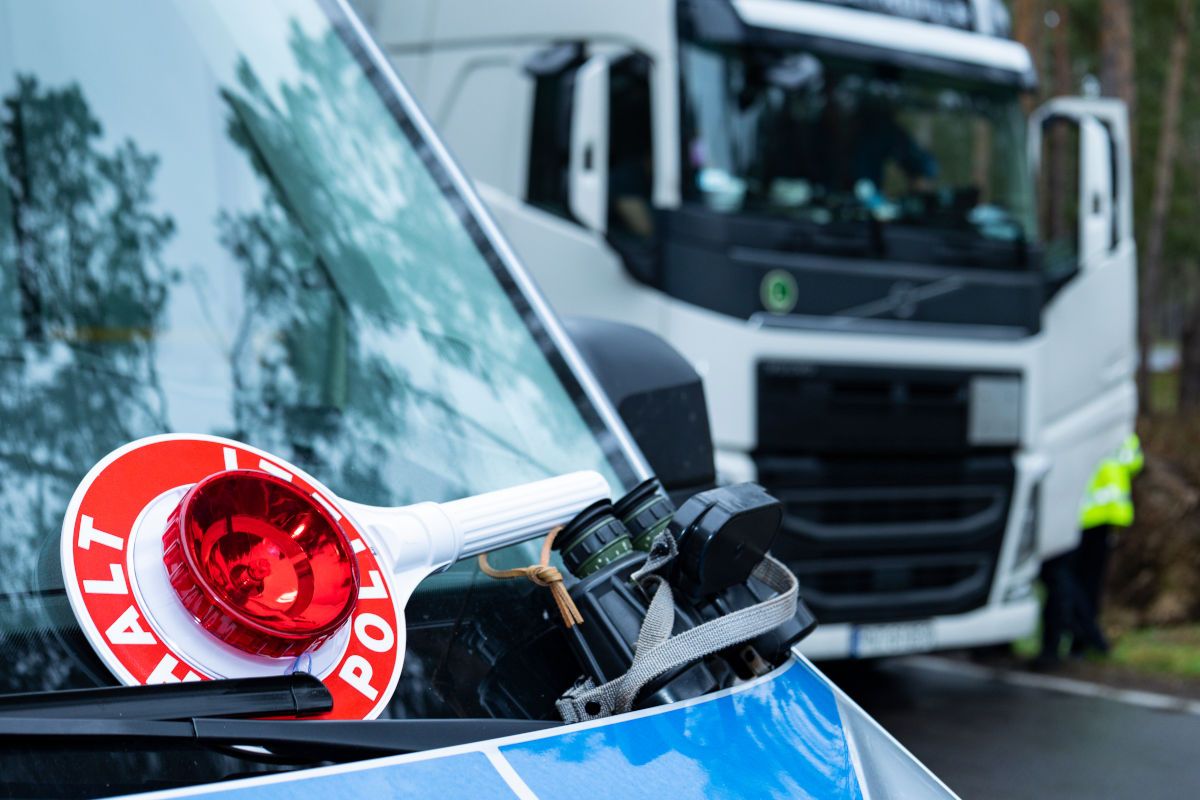
Traffic policy
WiM systems easily collect data that is important for identifying overloaded vehicles. This not only improves road safety, but also allows controls and sanctions to be implemented in a targeted manner.
An added bonus here:
Targeting traffic violations also reduces road wear and tear and extends the life of the infrastructure - and that means fewer roadworks.
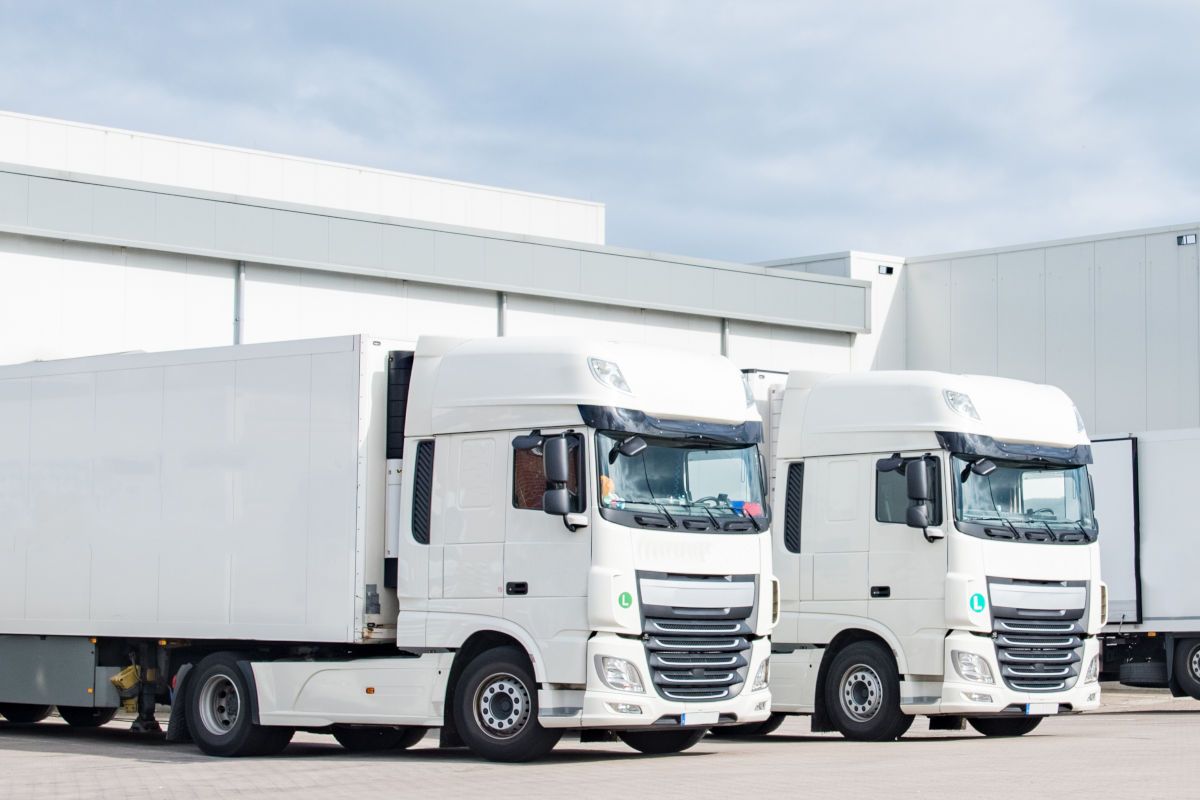
Logistics
WiM systems also offer invaluable advantages for logistics by enabling optimized weight monitoring of freight transports. This means that load limits are adhered to more reliably, which in turn prevents penalties and delays due to overloading.
In addition, companies are paying more attention to better planning the utilization of their vehicles, which leads to optimized fuel consumption and reduced CO2 emissions.
Weigh-in-Motion-Systeme kommen bereits an vielen Standorten weltweit zum Einsatz. Darunter beispielsweise in den USA, Kuwait, Deutschland, Kasachstan oder UK.

Data analysis
WiM systems can be used to record countless data in a simple way. In addition to the precise measurement of vehicle weights, this also includes ...
- the documentation (e.g. time stamps, photos and video sequences as well as license plate recognition)
- and the recording of external influences and disruptive elements such as gusts of wind, sudden braking maneuvers, loss of load, etc.
By constantly measuring this data, every incident can be documented immediately in such a way that it is meaningful in court.
High-speed Weigh-in-Motion systems are able to measure speed ranges from 5 km/h to 120 km/h in defined route stations for heavy goods traffic. For delivery vans, measurements are even possible at speeds of up to 140 km/h.
Conclusion: Weigh-in-Motion systems offer numerous advantages in intelligent transportation
Weigh-in-motion systems play a decisive role in future intelligent road traffic and, with their highly efficient data acquisition, not only facilitate communication between autonomous traffic units and thus the reduction of CO2 emissions, but also the decision-making process in traffic policy matters.
Last but not least: Europe is facing an increasing volume of heavy goods vehicles. This is accompanied by increased wear and tear on roads, increased noise emissions and longer braking distances due to loaded vehicles. WiM systems help to guarantee greater road safety and enable weight-based tolling. This minimizes empty runs, reduces CO2 emissions and protects the road infrastructure.
FAQ
The direct weight control of vehicles using Weigh-in-Motion systems is very efficient: with an accuracy of up to 2.5 %, vehicles are measured at speeds of 5 km/h to 140 km/h without having to stop.
Weigh-in-motion systems measure the total weight of vehicles while they are in motion. This makes it easy to determine which vehicles are overloaded without blocking traffic.
WiM systems enable the immediate detection of vehicles with overloaded axles before they drive onto public roads. This means that rule violations can be identified immediately. They also help indirectly in maintaining road quality, traffic efficiency and in making transport policy decisions.

STAY INFORMED
GET OUR NEWSLETTER!
Subscribe to our ITS / Smart Mobility Newsletter and receive regular updates on trends, developments, solutions and events.
Bilder: © AA+W – stock.adobe.com; © phogura – stock.adobe.com; © Countrypixel – stock.adobe.com; © reewungjunerr – stock.adobe.com
